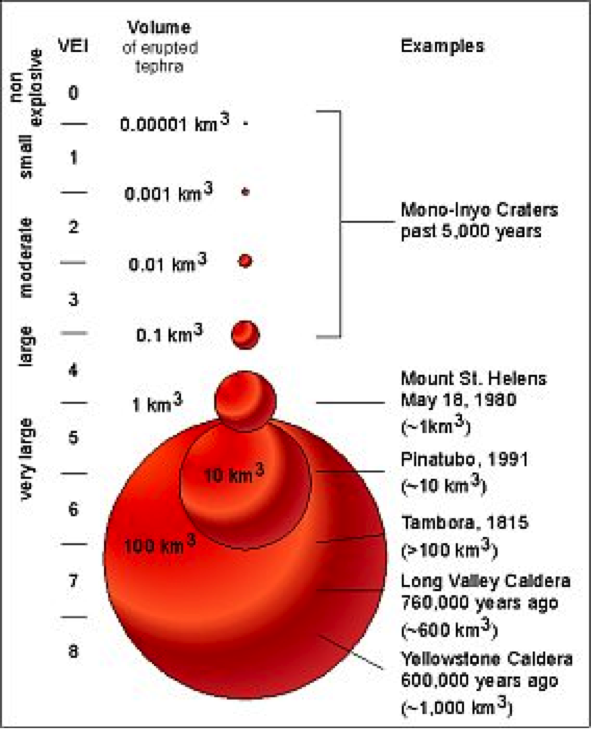Measuring the Climate Effects of Volcanic Eruptions
Not all volcanic eruptions are the same. The characteristics often depend on the type of magma within a volcano. There are three main indices used to assess the effects of volcanic eruptions on climate. Each is described below.
- The Level of Atmospheric Perturbation: >The Dust Veil Index (DVI) takes into account the amount of material dispersed into the atmosphere and how much the material blocks the incoming solar radiation.
- The Eruption Characteristics: Total Mass and Explosiveness: The Volcanic Explosivity Index (VEI) ranks volcanic eruptions to assess magnitude, intensity, dispersion and destructiveness. Eruptions are ranked from 1 to 8 with 8 being the most explosive. Eruptions are more explosive at volcanoes with very viscous magmas rich in silicon, aluminum, and sulfur. The viscous magma blocks the volcano's vents and trapped gases are heated, expand, and build pressure in the plugged vent until explosion. To get exploded material into the stratosphere takes an event with a VEI of at least 4.
- The Sulfur Release and Transport to Poles: Paleo-evidence of volcanic eruptions is recorded in ice sheets by the deposition of sulfuric acid aerosols. Thus, we have a proxy record of eruptions prior to recorded history. The Ice Core Volcanic Index (IVI) use data from ice cores, mainly based on sulfate levels to assess paleo-volcanic eruptions.
